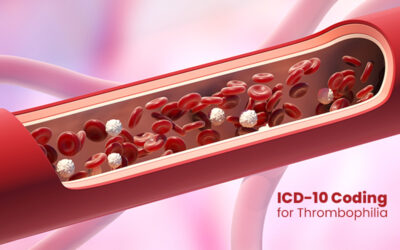Cardiomyopathy is a progressive disease of the myocardium or heart muscle that makes it harder for the heart to pump blood to the rest of the body. This is a serious lifelong condition which can lead to heart failure wherein your heart cannot maintain a normal ejection fraction or cardiac output. Often, the exact cause of this condition isn’t known as it can be the result of other conditions (acquired) or passed on from a parent (inherited). This is often the case, when the disease occurs in children. Types of cardiomyopathy include – Arrhythmogenic right ventricular dysplasia, Hypertrophic, Dilated and Restrictive cardiomyopathy. Diagnosis by an expert cardiologist is crucial for reducing the associated symptoms and effectively treating the different types of cardiomyopathy. Medical coding outsourcing services can help cardiology specialists ensure accurate and timely claim filing and reimbursement.
What are the Symptoms of Cardiomyopathy?
Generally, there might not be any signs or symptoms in the early stages of this heart condition. However, as the disease advances, several signs and symptoms appear including –
- Breathlessness with exertion or even at rest
- Swelling of the legs, ankles and feet
- Chest pain
- Heart palpitations
- Fatigue and dizziness
- High blood pressure
- Cough while lying down
If left untreated, the signs and symptoms tend to get worse. In some people, the condition worsens quickly, whereas in others it might not worsen for a long time.
Diagnosis and Treatment
Initial diagnosis of cardiomyopathy includes a detailed physical examination where in the physicians will enquire about the personal and family medical history and ask about the typical symptoms which the patients face (for instance, whether exercise brings on your symptoms). Several imaging tests such as chest X-ray, Echocardiogram, Electrocardiogram (ECG), Cardiac catheterization, Treadmill stress test and Cardiac MRI and CT scan will be conducted. In addition, blood tests and other genetic screening will be performed.
Treatment modalities for this condition will vary and depend on the type of cardiomyopathy you have. Prominent treatment modalities include – Medications, Radio frequency ablation, septal ablation and surgically implanted devices (such as Implantable cardioverter-defibrillator (ICD), Ventricular assist device (VAD) and Pacemaker. Severe cardiomyopathies may prove difficult to control or treat with medication, diet, or other non-surgical interventions. In such situations, surgical procedures such as septal myectomy and heart transplant may be a considered as a final option.
Medical Codes to Use
Cardiology medical coding involves the use of specific ICD-10 codes to document any such conditions, including cardiomyopathy. ICD-10-CM codes used to indicate a diagnosis of cardiomyopathy for reimbursement purposes include –
I42 – Cardiomyopathy
- I42.0 – Dilated cardiomyopathy
- I42.1 – Obstructive hypertrophic cardiomyopathy
- I42.2 – Other hypertrophic cardiomyopathy
- I42.3 – Endomyocardial (eosinophilic) disease
- I42.4 – Endocardial fibroelastosis
- I42.5 – Other restrictive cardiomyopathy
- I42.6 – Alcoholic cardiomyopathy
- I42.7 – Cardiomyopathy due to drug and external agent
- I42.8 – Other cardiomyopathies
- I42.9 – Cardiomyopathy, unspecified
- I43 – Cardiomyopathy in diseases classified elsewhere
Medical coding for different heart conditions can be a tricky process. For accurate and timely medical billing and claims submission, cardiology practices can outsource their medical coding tasks to a professional medical billing company that provides the services of AAPC-certified coding specialists.




